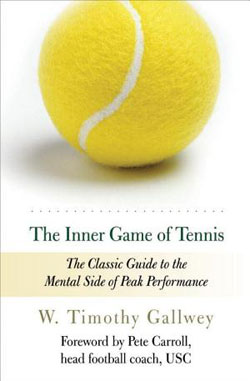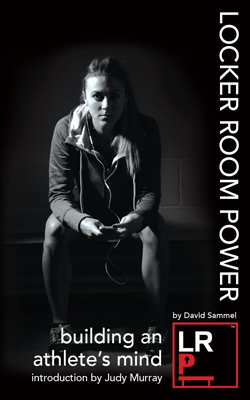|
TennisOne Lessons Creating Independent Athletes David Sammel, Head Coach, TeamBath-MCTA W. Timothy Gallwey’s, book the “Inner Game of Tennis” questioned the traditional way of coaching and in doing so inspired coaches and players to the idea that the subconscious mind is so powerful that you can allow pupils to find learning for themselves. It is now widely accepted that when people teach themselves and they have ownership of information they improve a lot faster. Most educators and coaches accept this, yet still in my experience there is an enormous amount of telling pupils and players what to do. This is not always because of the coach or the educator, but because it's what pupils tend to expect. In many ways it is less effort to teach and learn this way. Although giving responsibility and forcing pupils to think and come up with answers for themselves is more difficult at the start, long-term it pays dividends.
Taking responsibility for your own improvement can be a scary thought especially when you're not confident in the subject or the sport. Most experienced coaches use effective questioning as a major tool for teaching. However, I believe we can go a lot further than this. I believe we can empower pupils to learn by taking an even greater holistic approach. In our Academy we have made the following changes to how we deliver our program. We firmly believe that this is the next step in educating. TeamBath–MCTA focuses increasingly on ‘Developing Independent Athletes’ (DIA). We are changing the mind set of the coaches, physical trainers and the support staff to the strapline and belief that "We don't teach we educate". We have introduced ‘Independent Athlete’ meetings with each player aged 12 and over. Only players aged 12 to 14 deemed sophisticated enough by the coaches will be part of this process. The meetings involve the coaches (we have a lead coach and a secondary coach for each player so that there is continuity when a coach travels with other players), the S&C trainer and the player. Each player is asked to come to the meeting prepared with the following information:
The above signals intent in everything that the players have a focus on and are areas that they have chosen to improve. Linking a mental connection from the gym to the tennis court is an important part of improving the speed of learning. This will create more ownership of their tennis.
Responsibility of the Coaches The age, and the sophistication of the level of the player will determine how much ownership and how much help the player will get in designing their program. This is where each coach will show their leadership and their creativity in helping the player with their program and steering them towards greater ownership. In pioneering this program we aim to achieve the following:
The time taken off court to really listen, hear and facilitate the players ideas is incredibly valuable. I am equally convinced that this approach can work at any level of the game. I believe club players and club coaches who take the time to sit and listen and hear exactly what a player wants to improve and then encourages them to think about how they will achieve this is time extremely well spent. I also contend that this will make the whole process of educating and learning a lot more productive and fun for both the pupil and the coach.
Your comments are welcome. Let us know what you think about David Sammel's article by emailing us here at TennisOne.
Locker Room Power
Locker Room Power: Building an Athlete’s Mind is a Sports Psychology & Coaching book written by International Tennis Coach David Sammel. It’s a collection of honed and tested methods of applied psychology based on many years of experience and involvement in high-pressure situations in professional sport. This book helps identify the key factors you need as an athlete to consistently perform at the highest level, exploring the impact LRP has on athletes and their performance and most importantly how to create that all-important psychological edge over your opponents. Locker Room Power: Building an Athlete’s Mind will help you understand how to approach and apply the work needed to improve and succeed, ultimately the key factors you need to achieve excellence. In taking the time to read this book, you can create your own LRP! Locker Room Power: Building an Athlete’s Mind, is available to buy internationally through the website www.lockerroompower.com and on Amazon in both Paperback (£9.99) and eBook (£6.99) format. |

 ‘Locker Room Power (LRP) is a powerful aura that surrounds an athlete. It exists at every level and in every walk of life. Understand it and you create an edge. It’s about showing you’re on a mission; using your weapons to strike fear in your opponents and using your results to prove you have the competitive edge.’
‘Locker Room Power (LRP) is a powerful aura that surrounds an athlete. It exists at every level and in every walk of life. Understand it and you create an edge. It’s about showing you’re on a mission; using your weapons to strike fear in your opponents and using your results to prove you have the competitive edge.’